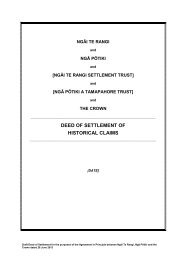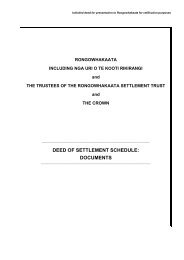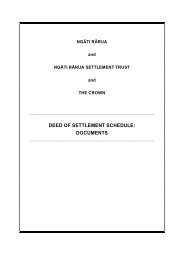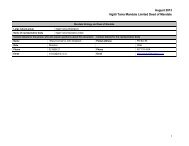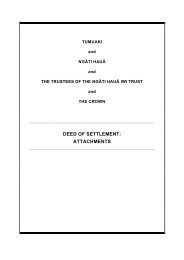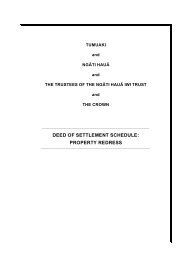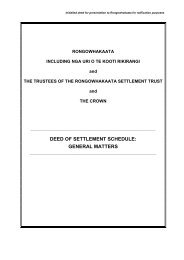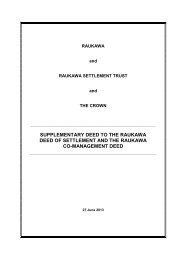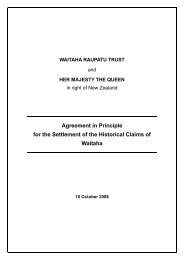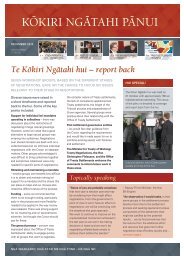Ngati Haua Deed of Settlement - Terabyte Interactive
Ngati Haua Deed of Settlement - Terabyte Interactive
Ngati Haua Deed of Settlement - Terabyte Interactive
Create successful ePaper yourself
Turn your PDF publications into a flip-book with our unique Google optimized e-Paper software.
NGĀTI HAUĀ DEED OF SETTLEMENT2: HISTORICAL ACCOUNT2.167 In the nineteenth century Ngāti Hauā and other Māori were exposed to infectiousdiseases, such as influenza and measles, for the first time. The lack <strong>of</strong> prior immunityto diseases that arrived in New Zealand with the Europeans took a heavy toll. TheTaranaki and Waikato wars also had a significant impact on the Ngāti Hauā population.Periodic outbreaks <strong>of</strong> disease continued throughout the late nineteenth century. An1896 influenza epidemic resulted in high mortality rates, especially at the settlement <strong>of</strong>Maungakawa.2.168 By the start <strong>of</strong> the twentieth century the population <strong>of</strong> Ngāti Hauā had begun to recoverfrom the steep decline experienced in the nineteenth century, although a large number<strong>of</strong> Ngāti Hauā tribal members died in the 1918 influenza pandemic.2.169 By the middle <strong>of</strong> the twentieth century, a number <strong>of</strong> factors, including a rising Māoripopulation and the lack <strong>of</strong> rural employment opportunities, encouraged significanturbanisation both to Hamilton and outside the customary rohe altogether. Urbanisationserved to further weaken cultural ties and practices.2.170 In the 2006 Census, the median annual income for Waikato-Tainui, including NgātiHauā, was approximately 8 per cent less than the median annual income for all Māori,and nearly 18 per cent less than for the total New Zealand population. Nearly 50 percent <strong>of</strong> Māori resident within the Matamata-Piako district had no formal qualifications,compared with 40 per cent <strong>of</strong> the total Māori population and 25 per cent <strong>of</strong> the NewZealand population as a whole.2.171 Within the Ngāti Hauā area <strong>of</strong> interest, just over one per cent <strong>of</strong> the land remains inMāori ownership today.2.172 Ngāti Hauā say that the actions and omissions <strong>of</strong> the Crown since 1840 have causedreal and enduring harm and distress to them as a people.32



